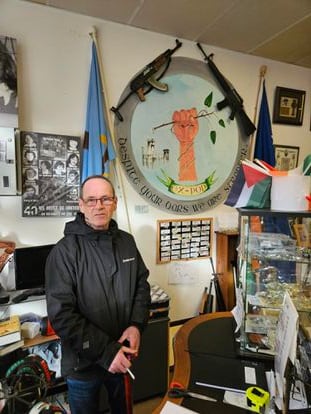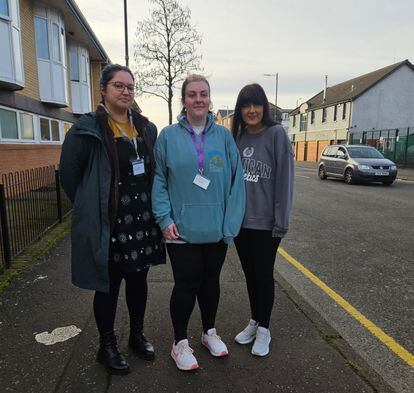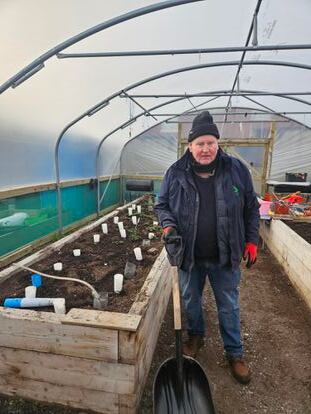Gleann Doherty was a baby of just six months when a British soldier shot her father to death in the back. The photo of Patrick Doherty, already dead on the ground and accompanied by his friend Paddy Walsh, is one of the icons of that Bloody Sunday (Bloody Sunday), on January 30, 1972, when men from the 1st Battalion of the Parachute Regiment shot at participants in a peaceful march of the Civil Rights Association of Northern Ireland, in the city of Londonderry (Derry simply, for Catholics). 13 people died instantly, most when they tried to flee from the gunfire. Another one, four months after being hit. 15 were wounded by gunshots.
That massacre, many believe, gave wings to the IRA and was the beginning of several decades of the so-called troubles (troubles), sectarian violence that left a trail of more than 3,000 dead.
For many years, Doherty made his living as a tour guide in Derry. The most popular request was a tour of the most politically symbolic places in the city. For example, the historic legend, written on what was the side of the house between Lecky Road and Fahan Street: ““You Are Now Entering Free Derry” (You are entering free Derry). Or the obelisk in memory of the Bloody Sunday massacre. Or the artistic murals that remember the characters of that time.
Today half of the tourists demand another type of tour of the city, and Doherty is delighted. This week he took three girls from Chicago (USA) to the most emblematic places of the popular Netflix series, Derry Girls. The final phase of the adolescence of four girls (and a cousin who comes from England whom they take for a walk, who they laugh at and whom they love like a strange bug) serves to tell, with great humor and great intelligence, the path of Ireland of the North in the nineties towards the longed-for peace.
All visitors culminate their tour with a photo in front of the enormous mural, in the historic center of the city, with the girls of Derry. Another type of street art for a different era.
Join EL PAÍS to follow all the news and read without limits.
Subscribe
“There is a big change in politics, and a big change in the way of thinking of many people. Especially among young people. Especially now that religion is no longer an important part of their lives. Things are approached in a much more selfish way, in the good sense of the word. And many see a better future in the European Union than in the United Kingdom, especially after Brexit,” says Doherty.
—And that, for the first time in history, as happened this week, a Republican woman from Sinn Féin occupies the chair of chief minister of Northern Ireland, is it important?
—“Very much,” the guide responds after saying goodbye to his American guests. “It is true that the political scheme that prevented Catholics from seizing power for decades no longer exists. But that 100 years after the division of the island we have a republican woman at the helm… Phew! “He expresses in amazement.
“There was no future”
Sinn Féin, considered for decades the political arm of the IRA terrorist organization, won the 2022 Northern Ireland regional elections. In large part, thanks to the faction of the unionists, at odds with each other over Brexit, of the Ireland Protocol that tied the Northern Irish future to the EU internal market and of the general feeling among them that Boris Johnson's Government had dealt them a stab in the back.
The Good Friday Agreement, which brought peace to a tormented area of Europe, forced unionists and republicans to govern together for autonomy to work. It was the so-called principle of consensus. But the political architecture designed favored the first magistracy, that of chief minister, to be occupied by a unionism that, until recently, outnumbered the Catholic population.
The triumph of Sinn Féin, whose determination to distance itself from its links to IRA violence has helped it gain popularity on both sides of the island, has little practical effect on the day-to-day governance of Northern Ireland —Emma Pengelly , the unionist who holds the position of deputy chief minister, holds the same power as O'Neill – but her historical symbolism has caused a small earthquake in the region.
Daniel Doyle is 59 years old. Almost a third of them, 17, spent in prison. The police caught him when he was transporting a pipe bomb in his vehicle along with two other terrorists. He now runs in Derry, along with other former prisoners, a kind of museum store dedicated to the republican struggle. Demanding posters, personal documents, photos, messages of support from people, two assault rifles on the wall, a replica of the cells where several IRA prisoners died on hunger strike, and handmade souvenirs of “the fight” to earn something of money.
And even he, who still aspires to much more than a mere autonomous government in Northern Ireland, has understood that the reality is different: “It was the young people of the south who began to change. And the young people from the north followed them. We have grown up with all this, but they understood that it was not going to work anymore. There was no future that way. “They want another life, and that other life is based on a single island,” says Doyle.

“Michelle O'Neill becoming First Minister is a very significant moment for the island of Ireland. And it is the continuation of all the seismic changes that have occurred in this society,” explains Colin Harvey, professor of International Humanitarian Law at Queen's University of Belfast. “I grew up in Derry, during the eighties and nineties, when the conflict was at its highest peak. I never thought I would witness these events. I believe that this political advance [la toma de posesión de O’Neill] It is going to add further impetus to the constitutional conversation around a united Ireland,” says Harvey.
“What island are we talking about?”
Derry has a Catholic majority, and Republican nationalists have recently shared the euphoria of thinking that they have finally been on the good side of history, although polls and statistics indicate that the reality is somewhat more complex.
It is a good idea to travel to Belfast, about 100 kilometers away, and walk along the Shankill Road, the city's most recalcitrant unionist bastion, to see the other side of the mirror.
There the murals continue to tell a story of resistance in which, if you scratch it, you can guess the frustration of feeling abandoned by London. Patriotism is always more exalted on the outskirts, and the residents of Shankill rushed to paint a brilliant mural paying homage to the new British monarch, Charles III, on the sidewalk in front of the mural that for years honored Elizabeth II.
Julie Anne Cole-Johnston teaches political theory classes at the neighborhood women's center. She is a unionist – a loyalist, she calls herself – to the core. But progressive. She was a candidate for the Progressive Unionist Party, today purely marginal. She doesn't want to know anything about active politics, but she knows her neighborhood and the reality of Northern Ireland.
He does not attach much importance to the election of Michelle O'Neill as chief minister. What he wants, after two years of blockade, is a Government that works and begins to help people. And he is not afraid of a future referendum, but he puts many nuances. “We are no longer debating whether or not to join the Republic of Ireland, but rather which shared island we are talking about,” she explains. “Are we going to maintain our public health and education, and the aid that is now coming from London? Or will we go to a private care system like the one in the south?,” she asks.

Because, with more or less eloquence when expressing it, many Northern Irish citizens are aware that unification would bring with it considerable economic complications.
“I don't think we'll see it,” says Carol Bailey, owner of the Royal Beauty hair salon on Shankill Road for more than a decade, and a lifelong resident of the neighborhood. “People know how expensive things are in the south. And here everything has changed radically. Except for a hardline minority who wants to fight, the rest want to live in peace. I have many Catholic clients. And I know many Protestants who go to the local Sinn Féin politicians, because they are the ones who are most active in municipal issues,” says Carol.
A few meters from his premises, Stewart Finnley, 60, takes care of a small community garden where children from nearby schools come to work and learn. It is one of the plots dedicated to revitalizing community life. There is a small flower arrangement before the portrait of the late Elizabeth II.

Stewart lived half his life in England, before returning to his native Northern Ireland. And with a very Irish sense of humor, he summarizes the general opinion of many of his fellow citizens about some politicians who announce historic changes or others who promise them that nothing will change: “Here we say that everyone pisses in the same bucket,” he says. Stewart, as he places new plastic to cover the greenhouse.
Follow all the international information on Facebook and xor in our weekly newsletter.
Subscribe to continue reading
Read without limits
_
#dream #united #Ireland #Catholic #enthusiasm #Protestant #skepticism